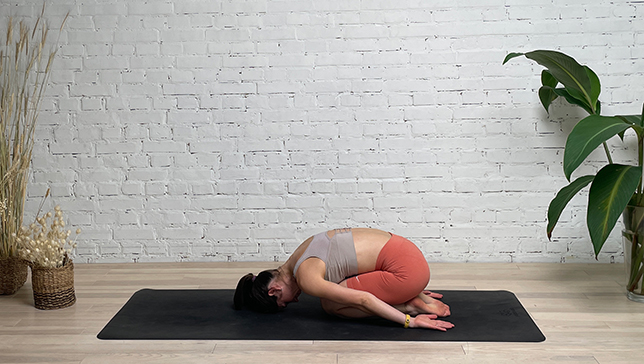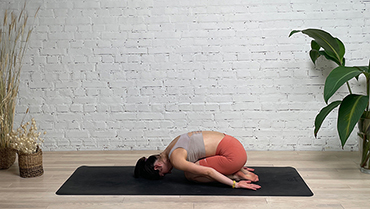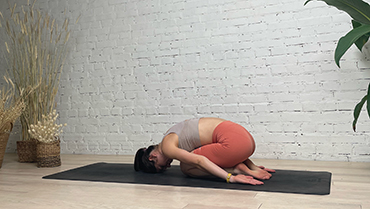Child Pose - Balasana

Contents
Child’s Pose in Sanskrit (‘Bala’, means ‘child’, ‘asana’ means ‘pose’). Balasana or Child’s Pose is generally practiced at the end of an intense yoga sequence where the connection of the breath and the movement of the body would have been lost. The practice of Balasana concluding such a sequence, allows one to come to peace with the body with the connection of the breath. No doubt all yoga poses should lead to the connection of the breath and the body, but certain poses are challenging where the chest and the abdomen are compressed or pulled, creating uneasiness with the breathing.
With Balasana, the spine remains relaxed in a forward fold and forces one to focus on breathing with the compressing of the abdomen and the chest towards the tummy. On the other hand, Balasana can be used purely as a restorative pose to heal patients with severe backaches, and insomnia, treat blood pressure, or just simply bring stress levels down.
Child Pose is considered a base pose as child pose variations can be derived from this pose. Child Pose helps boost energy in the body and hence can be included in different yoga sequences. Child Pose is considered a warm-up and restorative yoga pose to prepare or restore the body before or after more intense yoga poses.
Pose Detail
- Difficulty: Beginners
- Body Position: Forward Bend Yoga Poses, Seated Yoga Poses
- By Type: Pregnancy Yoga Poses, Restorative Yoga Poses, Yoga Poses For Seniors
- By Benefit: Yoga Poses For Anxiety And Panic Attack, Yoga Poses For Sleep, Yoga Poses For Stress Relief
Step-by-Step Instructions
Benefits and Contraindications
Gently stretches the hips, thighs, and ankles
Calms the brain and helps relieve stress and fatigue
Relieves back and neck pain when done with head and torso supported
Infection in the stomach
Pregnancy
Knee injury: Avoid Balasana unless you have the supervision of an experienced teacher.
Severe spondylitis
Injury at the ankle
Photo poses in different angles


Modification, Props and Tips
Child pose is about being comfortable and rested as well as increasing flexibility in the hips and back.
Many people find it more comfortable to take the knees wider (to the width of a yoga mat). This also creates more space if you have a larger belly or breasts.
You can also use props for more comfort in this pose:
- Use a block or stack your fists to support your forehead if it doesn’t reach the floor comfortably
- Use padding under your knees or ankles if you need to.
- If your knees are tender or your hips are too tight you could also try rolling up a blanket and placing it between your legs towards the back of your knees for extra comfort and support.
Frequently Asked Questions
If you feel discomfort or pain while practicing Balasana, modify the pose by placing a cushion or bolster under your chest or forehead, or by widening your knees to create more space. If the discomfort or pain persists, stop practicing the pose and consult with a healthcare professional.
Hold Balasana for 5 to 10 breaths, gradually increasing the duration as you become more comfortable with the pose. You can also use Balasana as a resting pose between more challenging yoga poses.
Variations
- Supported Child's Pose
- Extended Child's Pose
- Wide-Knee Child's Pose
- Thread the Needle Pose